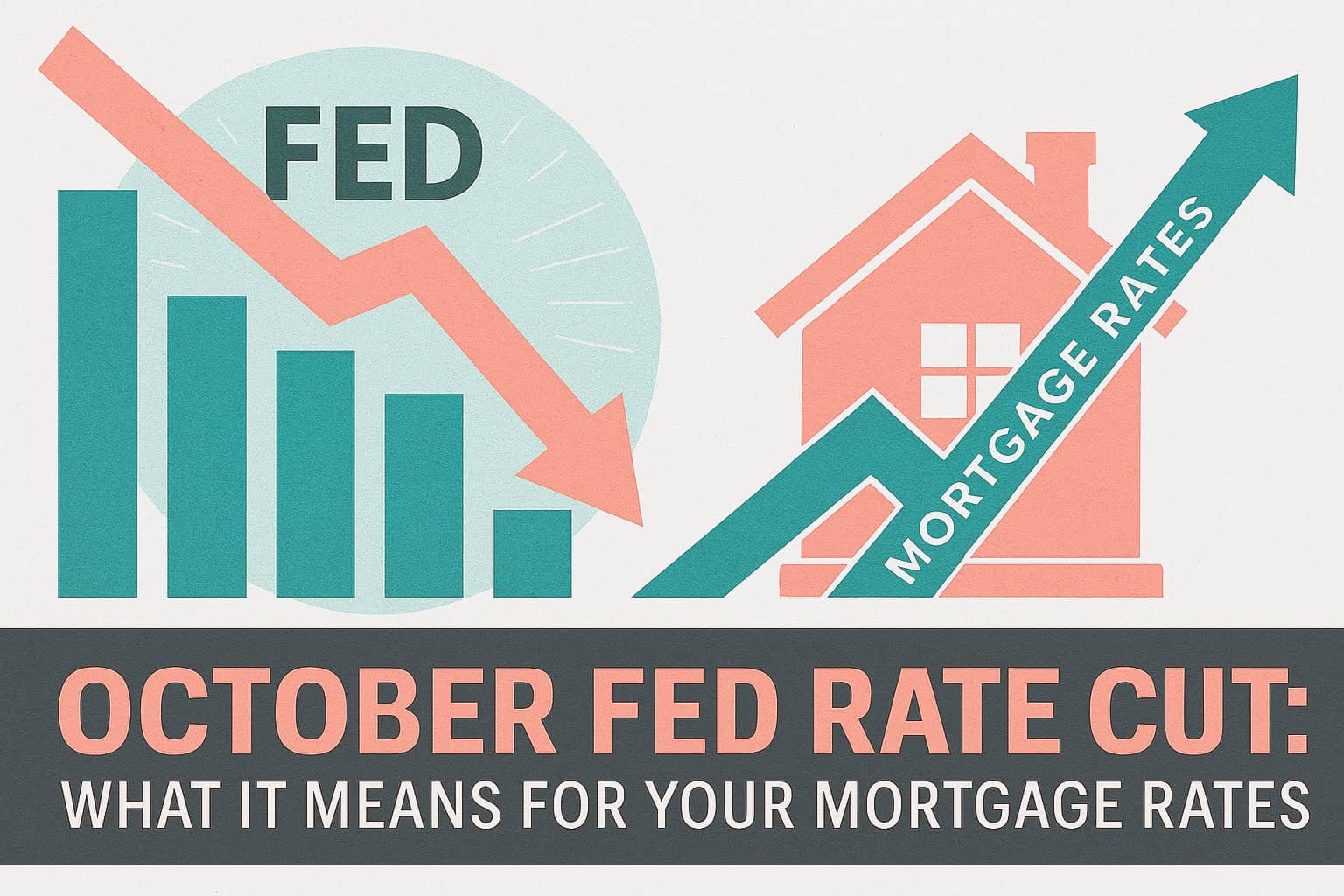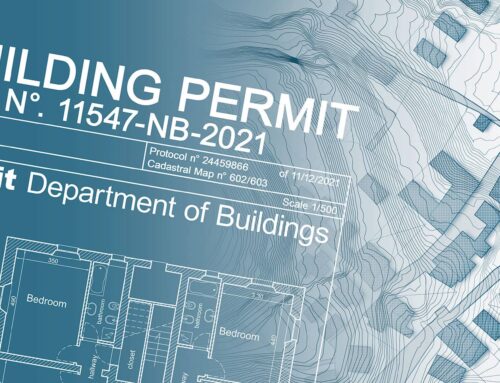
October Fed Rate Cut: What It Means for Your Mortgage Rates
In October, the Federal Reserve cut interest rates by 0.25%, a move expected to influence mortgage rates. This change aims to make borrowing cheaper and encourage investment. In this article, we explore how the October Fed rate cut affects your mortgage rates and what it means for both new homebuyers and those looking to refinance.
Key Takeaways
- The Federal Reserve’s 0.25% rate cut in October aims to stimulate economic activity by lowering borrowing costs, which may make mortgages more affordable for homebuyers.
- While mortgage rates have dropped to a three-year low of 6.13%, various factors like Treasury yields and inflation concerns may limit their overall decrease despite Fed rate cuts.
- Homeowners with current mortgage rates between 7% and 8% should consider refinancing to capitalize on lower rates, as the long-term impact of low mortgage rates could lead to increased property values and housing accessibility.
What is The October Fed Rate Cut?
In October, the Federal Reserve implemented a 0.25% rate cut, a move widely anticipated by the market, with 87.7% odds according to the CME FedWatch tool. This decision aims to stimulate economic activity by making borrowing more affordable, encouraging spending, and promoting investment.
Homebuyers may find mortgage payments more affordable due to the rate cut. The amount borrowers pay each month is influenced by interest rates and loan terms, affecting how much goes toward interest and principal over the life of the loan. Lower interest rates reduce borrowing costs, potentially boosting home buying activity and leading to higher home prices over time. Mortgage applications for the purchase of a home may increase as affordability improves. Managing mortgage interest payments effectively and seeking lower-rate loans becomes even more important in the context of debt. Additionally, considering a home loan can provide further options for prospective buyers.
The Federal Reserve’s actions directly influence the broader economy, but the immediate response in the mortgage market can vary. While the intention is to stimulate economic growth, the actual impact on mortgage rates depends on various factors, including market expectations and economic data.
Immediate Effects on Mortgage Rates
The immediate effects of the October Fed Rate Cut on mortgage rates have been notable:
- The average rate for a 30-year fixed mortgage, representing the national average, fell to 6.13%, marking a three-year low.
- This drop is a direct consequence of preceding Federal Reserve rate reductions.
- It showcases how quickly the market can respond to such announcements.
There may not be much movement in mortgage rates immediately following a Fed rate cut, as markets often anticipate these changes in advance.
Mortgage lenders typically determine current mortgage rates by adding a margin to the 10-year Treasury yield. Therefore, factors like weak economic and inflation data affecting Treasury yields can cause mortgage rates to decrease even before the Fed meeting. As a result, borrowers may see more favorable rates when applying for home loans or considering refinancing.
When shopping for a mortgage, it’s essential to compare offers from various lenders to find the most favorable rate. Banks are also key sources for mortgage rates and should be considered alongside other lenders when looking for the most competitive mortgage deal.
However, mortgage rates are influenced by more than just Fed rate cuts. The bond market plays a significant role, with mortgage lenders frequently adjusting rates in response to Treasury bond performance. Understanding these dynamics helps borrowers make informed mortgage decisions.
Why Mortgage Rates May Not Drop Significantly
Despite the Fed’s efforts to lower interest rates, mortgage rates may not drop significantly. Mortgage rates often move in the same direction as Federal Reserve rate changes, but the magnitude of the change may differ. One reason is that mortgage rates often adjust in anticipation of Fed announcements rather than reacting solely to the cuts themselves. This pre-emptive adjustment means that much of the expected decrease may already be reflected in current rates.
Moreover, a potential October rate cut of around 0.25% may have a limited effect on mortgage rates. All else being equal, a Fed rate cut would typically result in lower mortgage rates, but other factors, such as rising Treasury yields due to inflation concerns or other economic influences, can offset this effect. If Treasury yields rise due to fears of inflation or other economic factors, mortgage rates could increase even after the Fed cuts rates. This delicate balance between Fed actions and market conditions highlights why mortgage rates can remain relatively stable despite rate cuts.
Additionally, consumer expectations play a crucial role. If there is widespread anticipation of rate cuts, mortgage rates might decrease beforehand. However, these reductions are often temporary and can be reversed if investor sentiment shifts or if economic data suggests rising inflation.
Economic Data and Its Impact on Mortgage Rates
Economic data significantly impacts mortgage rates, with indicators like labor market performance, inflation trends, and other factors playing pivotal roles. Over recent weeks, mortgage rates have shifted in response to changing economic data, reflecting the market’s sensitivity to short-term trends. For example, job market reports showing declines in employment can heighten concerns about economic stability, which in turn can influence mortgage rates.
The yield on 10-year Treasury bonds often serves as a benchmark for 30-year fixed mortgage rates. These yields influence mortgage-backed securities, as they are compared to the yield on long-term government bonds. Freddie Mac tracks and reports national mortgage rate data through its Primary Mortgage Market Survey (PMMS), providing valuable insights and historical benchmarks for the market. Therefore, fluctuations in bond yields directly impact mortgage rates, reflecting changes in investor confidence and inflation expectations.
Affordability in the housing market is also affected by the interplay between interest rates and the supply-demand balance in real estate. As economic conditions fluctuate, so do mortgage rates, which can either improve or diminish home affordability for potential buyers. When reviewing charts or data visualizations of these trends, pay attention to the data ranges displayed on the axes, as they represent the scope and variability of the underlying economic indicators.
Who Should Consider Refinancing Now
Homeowners with mortgage rates between 7% and 8% from recent years should seriously consider refinancing as current mortgage rates decrease. Refinancing can help lower your monthly payment, making homeownership more affordable. It can also provide access to cash for various needs, offering financial relief and flexibility. Additionally, homeowners may want to explore their refinance share options to maximize benefits.
Cash-out refinances and adjustable-rate mortgages are gaining popularity among borrowers with substantial home equity. This trend underscores the importance of selecting the appropriate type of refinancing, whether it’s a rate and term refinance, a cash-out refinance, or a no-closing-cost refinance. Borrowers should compare offers from different companies, including banks, credit unions, and mortgage companies, to find the best rates and terms. Each option has its benefits, depending on the homeowner’s financial situation and goals.
As the Fed’s interest rate cuts enhance home affordability, more buyers can enter the housing market. For those considering refinancing, locking in a lower interest rate now can lead to substantial savings over the life of the loan. Homeowners should also factor in insurance costs when evaluating the total savings from refinancing.
How to Navigate the Current Mortgage Market
Navigating the current banking mortgage market for a particular purpose requires strategic planning and careful consideration of many factors. Shopping around for different mortgage lenders can lead to significant savings, as even slight differences in interest rates can accumulate to substantial money savings over time. Online services now make it easier for borrowers to compare mortgage offers and streamline the application process.
Requesting at least three quotes from various lenders allows homebuyers to identify the best mortgage terms and to negotiate more effectively. It’s also crucial to understand the total annual percentage rate (APR), as it encompasses both the interest rate and any associated fees, providing a clearer picture of the loan’s true cost.
Adjustable-rate mortgages can offer lower initial rates compared to fixed-rate loans, making them attractive for some homeowners. However, homeowners betting on future rate drops may view adjustable-rate mortgages as a temporary solution before refinancing again. Comparing loan estimates and considering the possibility of negotiating terms with lenders can also help secure the most cost-effective offer.
Potential Long-Term Effects on Housing Market
The long-term effects of sustained low mortgage rates on the housing market can be profound. Lower mortgage rates may lead to increased property valuations over time as demand rises. This increase in property values can also affect property taxes, potentially raising tax obligations for homeowners.
Sustained low interest rates can incentivize builders to construct more homes, addressing housing supply shortages and balancing the market. This increased construction activity can help alleviate housing shortages, making homeownership more accessible to a broader population.
While lower Fed rates may not significantly change property taxes, they can influence overall housing market dynamics and buyer sentiment. Understanding these potential long-term effects can help homeowners and prospective buyers make more informed decisions.
Steps to Refinancing Your Mortgage
Refinancing your mortgage involves several steps, similar to the process of applying for an original mortgage loan. The first step is gathering necessary documentation, including income and asset verification. This documentation ensures that lenders can accurately assess your financial situation and offer the most favorable terms.
Next, compare offers from different lenders and banks by requesting loan estimates that detail the loan amount, interest rates, origination fee, financing, and closing costs. Negotiating terms, especially with multiple offers or a strong credit score, can result in the best rate and lower fees.
Finally, once approved, borrowers have the option to lock in their interest rate or let it float until the closing date. Locking in a lower rate can lead to substantial savings over the life of the loan, making the refinancing process worthwhile.
Expert Opinions on Future Rate Movements
Experts have varying opinions on future rate movements. The Mortgage Bankers Association forecasts that the 30-year fixed mortgage rate will reach 6.5% by the end of 2025 and 6.4% by the fourth quarter of 2026. Fannie Mae’s forecast is more optimistic, predicting a drop in mortgage rates to 5.9% by the end of 2024 with a 30-year fixed-rate mortgage.
Despite these differences, both the MBA and Fannie Mae agree that mortgage rates will remain above 6% for the remainder of 2025. This alignment with historical trends suggests that significant drops in mortgage rates are unlikely in the near future.
Understanding these expert opinions can help homeowners and potential buyers set realistic expectations and make informed decisions about their mortgages. Staying informed about market trends and economic factors, including those from the past, will be crucial for navigating the future mortgage landscape and selling effectively.
Summary
The October Fed Rate Cut has significant implications for mortgage rates and the broader housing market. Understanding the immediate effects, the role of economic data, and the influence of Treasury yields can help homeowners and buyers make informed decisions.
For those considering refinancing, the current rate environment offers potential savings, but it’s essential to choose the right type of refinancing and compare offers from different lenders. The long-term effects of sustained low mortgage rates could lead to increased property valuations and new home construction, thereby impacting the dynamics of the housing market.







